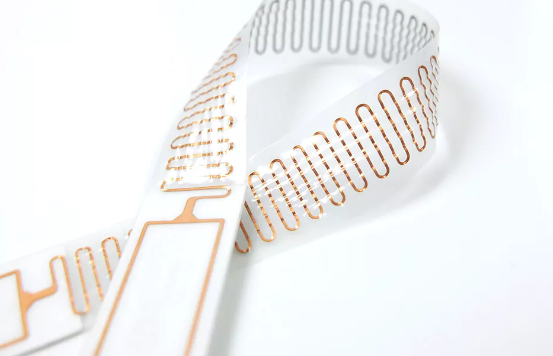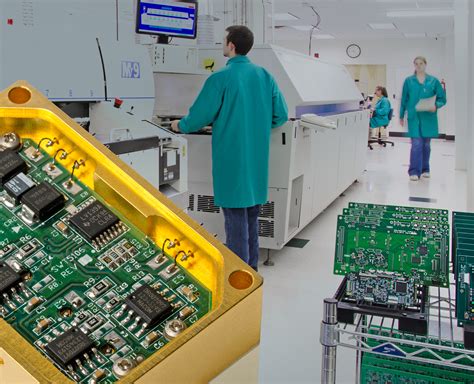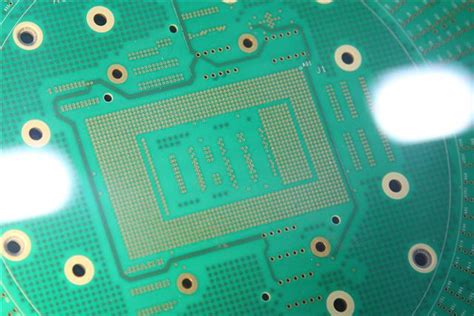Transparent flexible pcb
Advantages Of Transparent Flexible PCBs In Modern Electronics
Transparent flexible PCBs (Printed Circuit Boards) represent a significant advancement in the field of modern electronics, offering a multitude of advantages that cater to the evolving demands of contemporary technology. These innovative circuit boards combine the benefits of transparency and flexibility, thereby opening up new possibilities for electronic device design and functionality.
One of the primary advantages of transparent flexible PCBs is their ability to enhance the aesthetic appeal of electronic devices.
By integrating transparent materials, these PCBs allow for the creation of sleek, visually appealing products that can showcase internal components or incorporate unique lighting effects. This is particularly beneficial in consumer electronics, where design and appearance play a crucial role in marketability and user experience.
In addition to their aesthetic benefits, transparent flexible PCBs offer significant functional advantages.
Their flexibility allows them to be bent, folded, or twisted without compromising their performance, making them ideal for use in wearable technology, foldable smartphones, and other applications where traditional rigid PCBs would be impractical. This flexibility also contributes to the durability and longevity of electronic devices, as it enables the circuit boards to withstand mechanical stress and strain more effectively. Furthermore, the transparency of these PCBs can facilitate easier inspection and troubleshooting of electronic circuits, as it allows for a clear view of the underlying components and connections.
Another notable advantage of transparent flexible PCBs is their potential to reduce the overall weight and thickness of electronic devices.
By utilizing lightweight and thin materials, these PCBs contribute to the development of more compact and portable gadgets, which is a key consideration in the design of modern electronics.
This reduction in size and weight can also lead to improved energy efficiency, as smaller and lighter devices typically require less power to operate. Moreover, the use of transparent flexible PCBs can enhance the thermal management of electronic devices. The materials used in these PCBs often possess superior thermal conductivity, which helps to dissipate heat more effectively and prevent overheating. This is particularly important in high-performance electronics, where efficient heat management is crucial to maintaining optimal performance and preventing damage to sensitive components.
The versatility of transparent flexible PCBs extends to their compatibility with a wide range of manufacturing processes and materials.
They can be produced using various substrates, such as polyimide, polyester, and other advanced polymers, which offer different levels of flexibility, transparency, and thermal stability. This adaptability allows manufacturers to tailor the properties of the PCBs to meet the specific requirements of different applications, thereby ensuring optimal performance and reliability. Additionally,
transparent flexible PCBs can be integrated with other advanced technologies, such as printed electronics and organic light-emitting diodes (OLEDs), to create innovative and multifunctional devices. This integration can lead to the development of new products and applications that were previously unattainable with traditional rigid PCBs.
In conclusion, transparent flexible PCBs offer a range of advantages that make them highly valuable in the realm of modern electronics. Their ability to enhance aesthetic appeal, provide functional benefits, reduce size and weight, improve thermal management, and offer versatility in manufacturing and integration makes them an attractive option for a wide array of applications. As technology continues to advance, the adoption of transparent flexible PCBs is likely to increase, driving further innovation and enabling the creation of next-generation electronic devices.
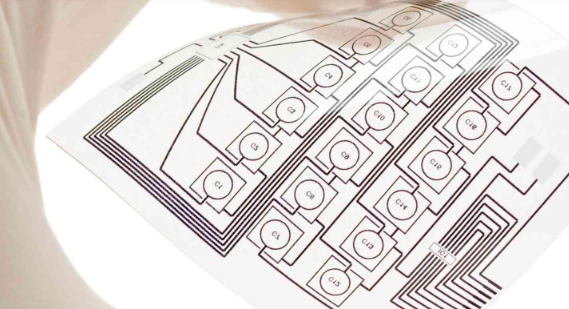
Manufacturing Techniques For Transparent Flexible PCBs
The manufacturing techniques for transparent flexible PCBs (Printed Circuit Boards) have evolved significantly, driven by the demand for innovative electronic devices that require both flexibility and transparency.
These advanced PCBs are essential in applications such as wearable electronics, flexible displays, and medical devices, where traditional rigid and opaque PCBs are unsuitable. The process of creating transparent flexible PCBs involves several intricate steps, each contributing to the overall functionality and reliability of the final product.
To begin with, the choice of substrate material is crucial.
Transparent flexible PCBs typically use substrates like polyethylene terephthalate (PET), polyimide (PI), or transparent polycarbonate (PC). These materials are selected for their excellent optical clarity, flexibility, and thermal stability. PET, for instance, is widely used due to its cost-effectiveness and good mechanical properties, while PI is favored for its superior thermal resistance. The substrate must be meticulously cleaned to remove any contaminants that could affect the adhesion of subsequent layers.
Following the preparation of the substrate, the next step involves the deposition of a conductive layer.
Traditional copper, commonly used in rigid PCBs, is not suitable for transparent applications due to its opacity. Instead, materials like indium tin oxide (ITO), silver nanowires, or graphene are employed. ITO is particularly popular because of its excellent electrical conductivity and transparency. The deposition of these conductive materials can be achieved through various methods such as sputtering, chemical vapor deposition (CVD), or printing techniques like inkjet or screen printing. Each method has its advantages and limitations, with sputtering providing high-quality films but at a higher cost, while printing techniques offer more cost-effective solutions but may require additional processing to achieve the desired conductivity and transparency.
Once the conductive layer is deposited, patterning is required to create the desired circuit layout.
Photolithography is a common technique used for this purpose, where a photoresist is applied to the conductive layer, exposed to UV light through a mask, and then developed to reveal the circuit pattern. Alternatively, laser ablation can be used to directly etch the pattern onto the conductive layer, offering high precision and flexibility in design. The choice of patterning technique depends on factors such as the complexity of the circuit, production volume, and cost considerations.
After patterning, the next step is the application of dielectric layers to insulate different circuit layers and protect the conductive traces.
Transparent dielectric materials like silicone or acrylic-based polymers are used, which can be applied through spin coating, spray coating, or printing. These layers must be carefully cured to ensure they provide adequate insulation without compromising the flexibility or transparency of the PCB.
Finally, the assembly of components onto the transparent flexible PCB requires specialized techniques.
Traditional soldering methods may not be suitable due to the thermal sensitivity of the substrate and conductive materials. Instead, conductive adhesives or anisotropic conductive films (ACFs) are often used to attach components. These materials provide strong electrical connections while maintaining the integrity of the flexible substrate.
In conclusion, the manufacturing of transparent flexible PCBs involves a series of sophisticated processes, each tailored to maintain the delicate balance between transparency, flexibility, and electrical performance. From the selection of substrate materials to the deposition and patterning of conductive layers, and the application of dielectric coatings, every step is critical in ensuring the functionality and reliability of these advanced PCBs. As technology continues to advance, further innovations in materials and manufacturing techniques will undoubtedly enhance the capabilities and applications of transparent flexible PCBs.
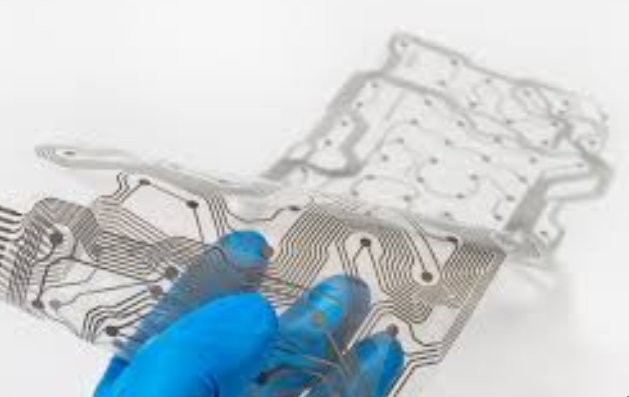
Applications Of Transparent Flexible PCBs In Wearable Technology
Transparent flexible printed circuit boards (PCBs) are revolutionizing the landscape of wearable technology, offering a myriad of applications that enhance both functionality and aesthetics. These advanced PCBs, characterized by their transparency and flexibility, are crafted from materials such as polyimide or polyethylene terephthalate (PET), which allow them to bend and conform to various shapes without compromising their electrical performance. As a result, they are becoming increasingly integral to the development of next-generation wearable devices.
One of the primary applications of transparent flexible PCBs in wearable technology is in the realm of health monitoring devices.
These devices, which include smartwatches, fitness trackers, and medical sensors, benefit immensely from the flexibility and transparency of these PCBs. For instance, the ability to bend and stretch allows the circuit boards to be seamlessly integrated into fabrics or directly onto the skin, providing continuous and unobtrusive monitoring of vital signs such as heart rate, blood oxygen levels, and body temperature. Moreover, the transparency of these PCBs ensures that the devices remain discreet and aesthetically pleasing, which is particularly important for users who prioritize both functionality and style.
In addition to health monitoring, transparent flexible PCBs are also making significant strides in the field of augmented reality (AR) and virtual reality (VR) wearables.
AR and VR headsets require intricate circuitry to support high-resolution displays, sensors, and other components, all while maintaining a lightweight and comfortable design. Transparent flexible PCBs meet these requirements by offering a lightweight and adaptable solution that can be integrated into the curved surfaces of headsets. This not only enhances the user experience by providing a more immersive and comfortable fit but also allows for the incorporation of additional features such as eye-tracking sensors and gesture recognition modules.
Furthermore, the integration of transparent flexible PCBs in wearable technology extends to the fashion industry, where they are used to create smart clothing and accessories.
Designers are increasingly exploring the potential of embedding electronic components into garments to offer functionalities such as illumination, temperature regulation, and even biometric sensing. Transparent flexible PCBs enable these innovations by providing a nearly invisible platform for the electronic components, ensuring that the aesthetic appeal of the clothing is not compromised. This fusion of technology and fashion opens up new possibilities for interactive and adaptive clothing that can respond to the wearer’s environment and activities.
Moreover, transparent flexible PCBs are also finding applications in the development of smart eyewear.
Smart glasses, which offer functionalities such as heads-up displays, navigation assistance, and real-time translation, require sophisticated circuitry that can be integrated into the slim and lightweight frames. Transparent flexible PCBs provide an ideal solution by allowing the necessary electronic components to be embedded within the lenses or frames without adding bulk or obstructing the user’s vision. This not only enhances the functionality of the smart glasses but also ensures that they remain stylish and comfortable to wear.
In conclusion, the applications of transparent flexible PCBs in wearable technology are vast and varied, spanning health monitoring devices, AR and VR headsets, smart clothing, and smart eyewear. The unique properties of these PCBs, including their flexibility, transparency, and lightweight nature, make them an indispensable component in the development of innovative and user-friendly wearable devices. As technology continues to advance, it is likely that the role of transparent flexible PCBs in wearable technology will only continue to grow, paving the way for even more groundbreaking applications and devices.
Future Trends In Transparent Flexible PCB Development
The development of transparent flexible printed circuit boards (PCBs) represents a significant advancement in the field of electronics, promising to revolutionize various industries by offering unprecedented design flexibility and aesthetic appeal. As we look towards the future, several trends are emerging that will likely shape the trajectory of transparent flexible PCB technology, driven by the increasing demand for innovative electronic devices and the continuous push for miniaturization and enhanced functionality.
One of the most notable trends in the development of transparent flexible PCBs is the integration of advanced materials.
Traditional PCBs are typically made from rigid materials such as fiberglass and epoxy resins, which limit their flexibility and transparency. However, recent advancements in materials science have led to the development of new substrates, such as polyethylene terephthalate (PET) and polyimide, which offer both flexibility and transparency. These materials not only allow for the creation of bendable and foldable circuits but also enable the production of lightweight and durable electronic devices.
In addition to material innovations, the manufacturing processes for transparent flexible PCBs are also evolving.
Conventional PCB manufacturing techniques, such as photolithography and etching, are being adapted to accommodate the unique properties of flexible substrates. Moreover, emerging fabrication methods, such as inkjet printing and roll-to-roll processing, are gaining traction due to their ability to produce high-resolution patterns on flexible materials with greater efficiency and lower costs. These advancements in manufacturing technology are expected to accelerate the adoption of transparent flexible PCBs in various applications, from wearable electronics to medical devices.
Another key trend in the development of transparent flexible PCBs is the increasing focus on sustainability.
As environmental concerns continue to rise, there is a growing emphasis on developing eco-friendly electronic components. Transparent flexible PCBs, with their potential for reduced material usage and lower energy consumption during production, align well with this trend. Researchers are exploring the use of biodegradable and recyclable materials for PCB substrates and conductive inks, aiming to minimize the environmental impact of electronic waste. This shift towards sustainable practices is likely to drive further innovation in the field, resulting in greener and more efficient electronic devices.
The convergence of transparent flexible PCBs with other cutting-edge technologies is also a significant trend to watch.
For instance, the integration of transparent flexible PCBs with organic light-emitting diodes (OLEDs) and other flexible display technologies is paving the way for the development of next-generation displays that are not only flexible but also transparent. This could lead to the creation of novel applications, such as transparent screens for augmented reality (AR) devices and heads-up displays (HUDs) in automotive and aerospace industries. Additionally, the combination of transparent flexible PCBs with advanced sensors and wireless communication modules is expected to enable the development of smart textiles and other wearable technologies that seamlessly integrate with the human body.
As we move forward, the challenges associated with transparent flexible PCB development, such as ensuring reliable electrical performance and mechanical durability, will need to be addressed. However, the ongoing research and collaboration between academia and industry are likely to yield innovative solutions that overcome these obstacles. The future of transparent flexible PCBs holds immense potential, promising to transform the way we design and interact with electronic devices, ultimately leading to a more connected and technologically advanced world

